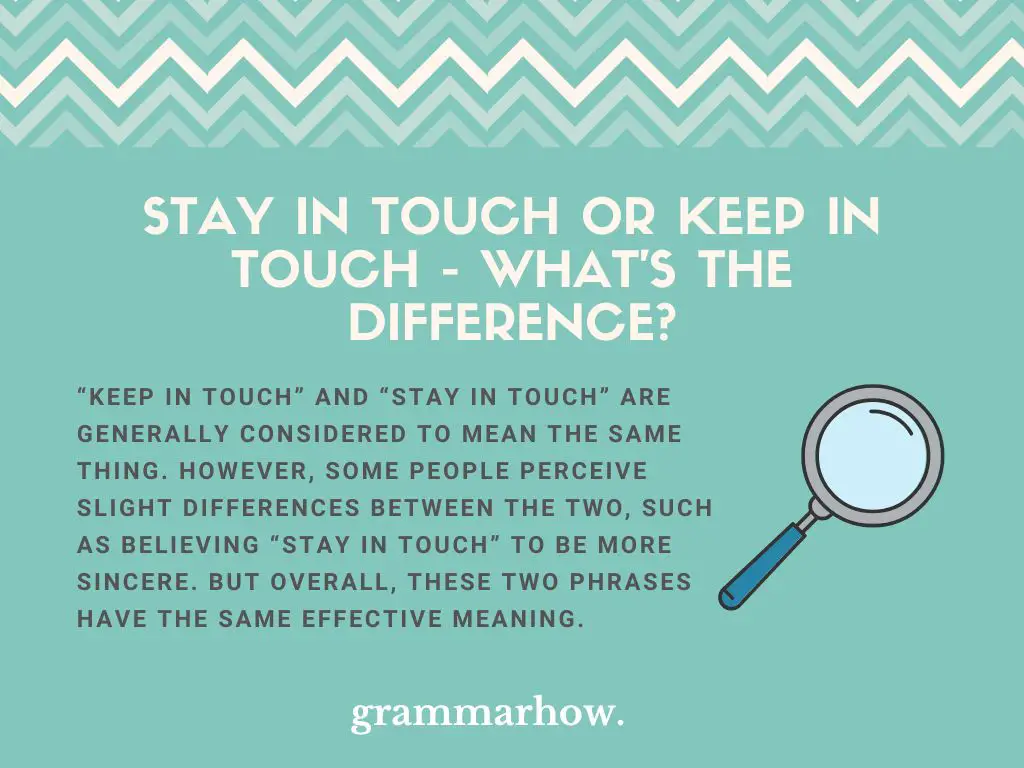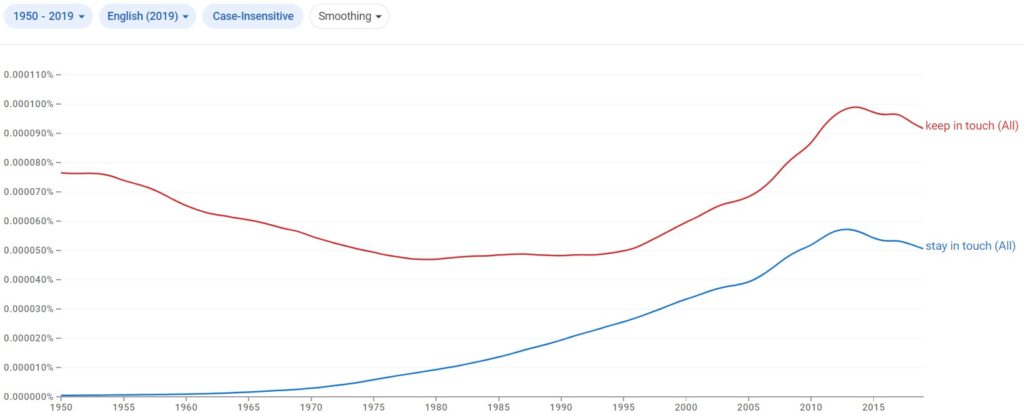Some phrases are very similar, yet have slightly different meanings. Is there actually a difference between “stay in touch” and “keep in touch”, or are these two phrases just different ways to say the same thing?
Stay in Touch or Keep in Touch – What’s the Difference?
“Keep in touch” and “stay in touch” are generally considered to mean the same thing. However, some people perceive slight differences between the two, such as believing “stay in touch” to be more sincere. But overall, these two phrases have the same effective meaning.

“Keep in touch” or “stay in touch” are both statements that imply a willingness to remain in contact with someone else. You could use them interchangeably, and there would be no confusion among anyone you are speaking to.
However, some people perceive the two phrases to have slightly different connotations. Some believe that “keep in touch” implies less frequent contact than “stay in touch”. Others believe that “stay in touch” is for established connections while “keep in touch” is for new ones.
But this is all a matter of personal preference by individual. Officially, the two phrases have the same meaning. This graph from Google’s Ngram Viewer even reveals that both phrases are used quite frequently, enough to be considered synonymous.

Ultimately, you can use whichever phrase that you feel is preferable. As you can see below, a sentence’s meaning does not change regardless of which choice you make:
- Billie and Jean stay in touch.
- Billie and Jean keep in touch.
They are effectively interchangeable.
Stay in Touch
“Stay in touch” is sometimes perceived as a more sincere and friendly way to say that two or more people maintain (or should maintain) a connection with each other. Officially, it means the same thing as “keep in touch”, but some view it as more personal than that option.
While this is not a distinction that matters in any official capacity, it is the perception of some speakers. Some believe that “stay in touch” implies more frequent contact, personal connection, and sincerity than “keep in touch”. Others see no difference between the two phrases at all.
Ultimately, the implications of words are carried more by tone of voice and demeanor than anything else. Even “stay in touch” can sound noncommittal or rude if said in a certain way or used in certain context.
The sentences below exemplify the different ways “stay in touch” may be used:
- I suppose we can stay in touch if you want to.
- I don’t see any reason why we should stay in touch.
- We may have just become friends today, but I think we should stay in touch.
- We can stay in touch if you want updates on how things are going.
Keep in Touch
“Keep in touch” means the same thing as “stay in touch”. It’s a way to indicate that you either want to or do stay connected with other people. However, some people feel that “keep in touch” is less friendly or sincere.
Others assume that “keep in touch” is something you would say to a new acquaintance, not an old friend. However, this is all a matter of opinion. Ultimately, “keep in touch” and “stay in touch” mean the same thing. Tone of voice is more important when it comes to implications.
Depending on context and the tone of one’s voice, “keep in touch” can sound just as friendly or just as impolite as “stay in touch”.
Just look at the examples below:
- It sounds like a hassle to keep in touch with everyone.
- I’d love to keep in touch with you over the next few months.
- Be sure to keep in touch, alright?
- I try to keep in touch with my old friends.
Conclusion
“Keep in touch” and “stay in touch” are interchangeable and have the same meaning. The slight differences between them are a matter of opinion, nothing more. You can use either phrase and have the same meaning in any sentence.

Martin holds a Master’s degree in Finance and International Business. He has six years of experience in professional communication with clients, executives, and colleagues. Furthermore, he has teaching experience from Aarhus University. Martin has been featured as an expert in communication and teaching on Forbes and Shopify. Read more about Martin here.
